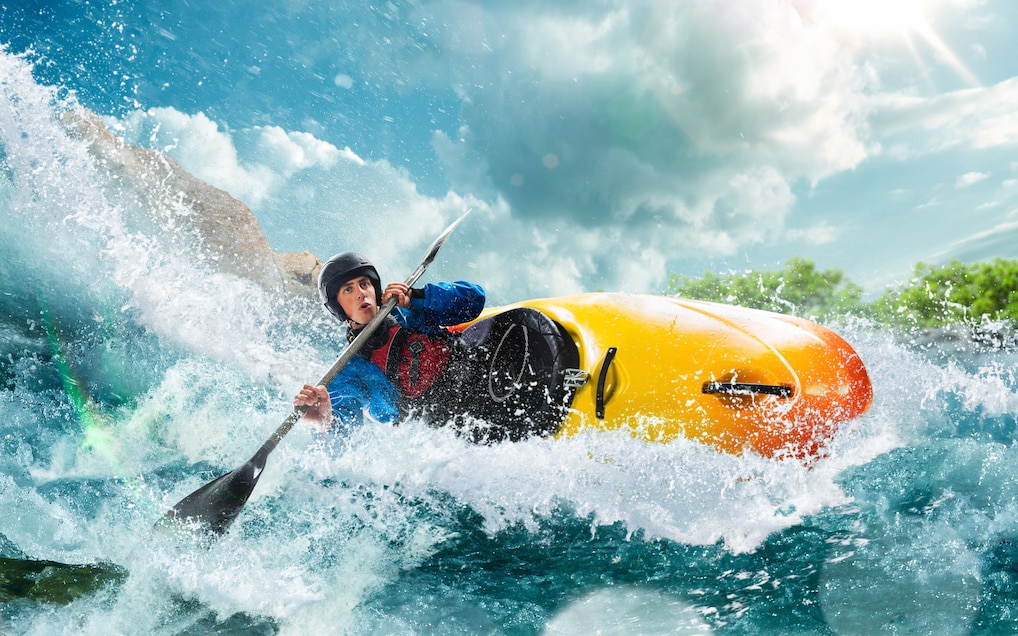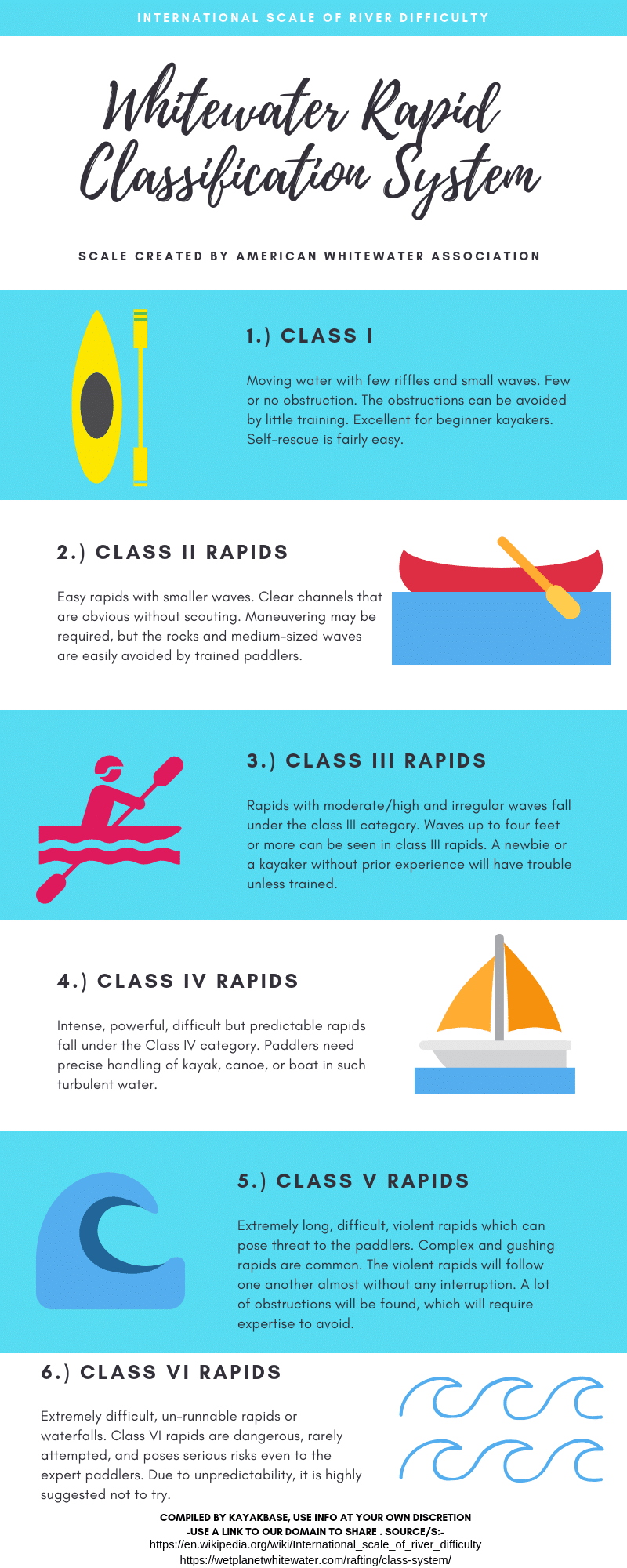Paddling Terminology and Slang: Nobody Says ‘Up a River Without an Oar’
October 30, 2020
Welcome to our third — and final segment in our series about sports terminology and slang terms. In this post, we’ll be talking about whitewater paddling, and right off the bat, we’ve got a warning for the novice paddler.
Those who might be unfamiliar with whitewater kayaking or canoeing might think rowing and paddling are the same thing. But those folks would have another think coming. Because nothing raises the hackles of a whitewater guide or enthusiast than hearing a newbie describe canoe and kayak propulsion as “rowing.” Strike One!
The only thing worse would be referring to a paddle as an oar. Paddles are used for paddling. Oars are used for rowing. Strike Two!
We apologize for the harsh tone, but we are professional educators and guides here at The National Center for Outdoor & Adventure Education (NCOAE), and our primary purpose today is to support you in your efforts to make yourself a more confident person when you emerge from the river. That means that, during the course of a conversation, if you were to say you were rowing a river and got your playboat stuck in a ‘sticky hole,” you would need to take a “wet exit” from the conversation without the opportunity for a “brace” or a “combat roll.” Fact!
So, let’s pack our dry bags, pull on our skirts and PFD’s and hit the river.
We’ll start with the name of the vehicle in which we will be paddling. Your first thought might be to call it a kayak. Don’t. Yes, in every design aspect and shape it’s a kayak. But when you talk about your kayak, you will be saying “boat.” No, really. We insist. And we understand you might be confused but trust the process.
Here are some terms you’ll need to know about the boat (kayak) and it is various and sundry accessories:
Cockpit: The hole in the deck where you enter and sit in your boat.
The deck: The top of the boat that surrounds the cockpit.
Hull: The bottom of the boat.
Bow: The front
Stern: The back
Skirt: A neoprene (wetsuit material) tube that you will step into (skirt) and when seated in the cockpit you will stretch and fasten around the cockpit (with foul language to guide you if it is too small for the boat). The idea is to prevent water from coming into your boat as you make your way along the waterway.
PFD: If you say the word “lifejacket” around any paddler, you’re in for a hard lesson because lifejackets won’t save your life. Instead, boaters use the term PFD (personal flotation device) to describe the piece of equipment that can float. Know that it will float with or without you. So, buckle, zip and tighten properly. An ill-fitted PFD is just a funny-looking vest.
Dry top: The top or jacket you will wear in cooler temperature and cooler rivers to keep you warm. You will wear your dry top and pants during winter descents.
Splash top: Keeps you dry but not super warm. For getting splashed!
Helmet: Simply put, your external skull. On a whitewater river, up the creek without a paddle is bad. But without a helmet, it’s BANANAS! Protect yourself, paddle hard, stay safe! Buckle the helmet or it’s just a funny-looking hat.
How we talk about Water
Just as we discussed in our climbing terminology post, there is a classification system that describes the ease and difficulty of moving water. It is important to know the water, practice and know your limits.
International Scale of Whitewater
What you will see and how to respond
Combat Roll: This is being able to roll your boat upright, while remaining in the boat. A combat roll happens in a rapid. If you are rolling in a pool or flatwater, that is just practicing. When you hit a combat roll you will know it. The smile on your face will be seen all the way up and down river.
Brace: Braces are used to recover when you’re thrown off balance while paddling a boat. The idea is simple. If you lose your balance, you’ll reach out to the side of your kayak with your paddle and slap the water with your blade.
Wet Exit: A wet exit is the last resort for kayakers when the combat roll fails. Grab the loop on your skirt and pull the boat off like a pair of pants. (As an aside, we have all had to do this, so there’s no shame in a wet exit.) Depending on your paddling partners, you may be ceremoniously forced to drink out of your wetsuit boot (shoe) at the end of the day. We have all done that as well.
Eddy: This is calm water formed by a rock or other large obstruction that blocks the down river flow of water. You can use eddies to slow down, rest, stop, or get out of the moving water to watch others paddle a rapid.
Hole: Where the current flows over an obstacle and then reverses flow back on itself. Holes can stop you in your forward motion and even flip you. When encountering a hole, your best bet is to lean forward, take a power stroke, and PUNCH through it.
Strainer: Yes, you have a strainer in your kitchen sink. Water passes through and larger objects get trapped. Like the noodles. In boating, according to boat-ed.com, a strainer “is created by a manmade or natural obstruction such as a tree, root system, fencing, or guard rails.” Trust us — you do not want to be trapped in a river strainer. If you are out of your boat, climb on top of strainers. DO NOT TRY TO SWIM UNDER!
So there you have it — a beginner’s list of paddling terminology you may encounter while on the water. If this list is all you know about whitewater paddling, we suggest you get out on a river with professionals and seek instruction. We’re thinking that if you digested all three segments of our Terminology and Slang series, you’re properly armed with what you need to translate and navigate conversations led by outdoor instructors and guides like the ones we have here at NCOAE.
Now get out there on the trail, in the surf, or on the river.
And if you’d like to read the other posts in this series, please see:
TALK TO US
Have any further questions about our courses, what you’ll learn, or what else to expect? Contact us, we’re here to help!


Leave a comment